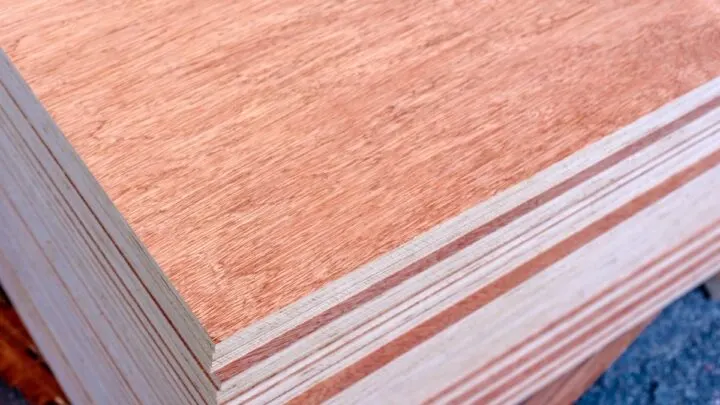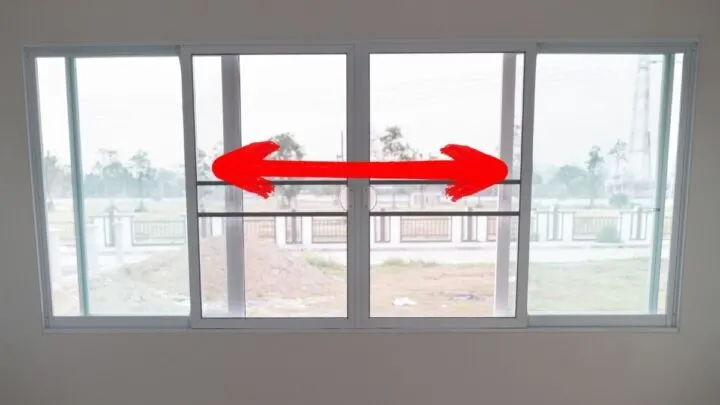If you just bought a new air conditioner and are only now realizing that your window is too wide for the unit, it is easy to feel defeated in this situation.
Don’t worry; this happens all the time, and there are a few simple fixes that you can implement to get your air conditioner to properly fit your window.
However, each fix requires a different kind of material, and you may find that one approach will suit your home better than another.
If your window is too wide for your air conditioner, measure the gaps that you need to fill and then implement one of these following simple fixes: insulated side panels, spray foam sealant, plywood, or cardboard.
Air conditioner installations can be a real pain. The units themselves are generally standardized to a certain size but windows can greatly vary across the board.
This results in a lot of people needing to rely on DIY approaches to fit their air conditioning units into their windows.
What you essentially want to do is fill the gaps between your unit and your window.
Most units come equipped with spacers that you can utilize to try to fill these gaps without needing to do too much additional handy work, but it’s quite rare for these to be enough to get the job done.
Luckily, there are some great materials that you can use to fill these gaps, and installing them to fit your window and air conditioning unit is very simple.
To help you fit your air conditioner into your wide window, we are going to break down each fix in more detail.

4 Simple Fixes: Window Air Conditioner Installation
Before you commit to any material, first consider exactly what you want to achieve. Do you simply want to fill your gaps and call it a day?
Or do you want to have an optimum level of insulation?
Your local climate is a critical factor when making this decision, as it would be wise to maximize your insulation if you live in a region that gets colder weather – especially in the winter.
On the other hand, if you have a relatively stable climate all year long with mild winters, you can be more flexible with your material of choice.
Regardless of which fix you end up going with, we would recommend taking an accurate measurement of your air conditioning unit and the gaps that you need to fill before you buy any materials.
Another important thing to keep in mind is that some materials are going to be better suited for specific types of gaps, as not all are ideal for exceedingly wide-spaced windows.
1. Insulated Side Panels
Getting some insulated side panels to fit your air conditioning unit to your window is one of the easiest and most reliable approaches that you can take for this fix.
Insulated side panels are available at just about every hardware store and you can also buy them online.
These are a fantastic option and very easy to implement. After taking your initial measurements, you should have an idea of how much material you need to fill your gaps.
Insulated side panels are available in a variety of different sizes, so you should pick something that is appropriate for your window and unit.
Cut the material based on the size of the gaps that you want to fill.
Insulated side panels are usually made out of foam and you can cut through the material using a standard pair of household scissors.
After you have cut your panels and placed them over the gaps of your window, you need to seal them shut to prevent any air leaks and pests from getting through.
You can do this with weather-stripping tape or calk.
If your air conditioner is equipped with wings, you can use them in combination with your panels to get better insulation.
If you have sealed your panels properly, you should not have any air leaks and you will have great insulation for heat, as well as cool climates.
However, these are not always the most reliable option for extremely cold regions, given that they will not insulate your home properly in freezing conditions.
For extremely cold winter climates, consider getting thicker panels that provide extra insulation.
2. Spray Foam Sealant
Spray foam sealant is a go-to approach for a lot of people, as it is reliable, effective, and very easy to implement.
This product is filled with an expanding material that you can use to line the gaps around your air conditioning unit.
Before you begin, you should try to cover the surrounding area so that none of the material makes contact with your walls.
In addition, put on some safety goggles and keep the spray foam away from any open flames given that it is flammable.
With your air conditioner positioned, begin spraying along the base of the unit to fill any bottom gaps first. As you move along the gap spray the foam evenly, move up the sides, and make your way around the entire unit.
What’s great about spray foam sealant is that it is very weather-proof. Mildew and mold can become a problem for other materials like insulated panels given that they still absorb moisture.
Spray foam sealant, however, does not and it will last for decades before needing to be replaced.
The level of insulation that you get from this material is also superior to just about anything else that you can use for this fix – making it a perfect option for anyone living in a colder region.
It is important to note that this method is more practical for smaller gaps that do not have as much spacing between the unit and the window.
The reason for this is that you can only get about an inch of foam sealant on your first pass-through.
Once the material has been sprayed onto the gap, it will require about 1 hour for it to become firm and up to 24 hours to fully harden.
However, you can still use spray foam sealant on large gaps, provided that you have some patience. Once hardened, you can go along the foam barrier again to create another layer of foam.
After a few pass-throughs, you should be able to fill your gaps properly.
One drawback of spray foam sealant is that it is not very pleasant to look at.

3. Plywood
Plywood is an easy and versatile option for this fix. Most hardware stores are stocked with different kinds of plywood and you can select the level of thickness that you want for your specific window.
Based on the measurements that you took for your gaps, you will need to cut the wood to fit the unit into your window.
If you have a bandsaw or just a traditional hand saw, that will be sufficient to cut your plywood.
However, if you do not have these tools laying around the house, most hardware stores will cut your plywood for you if you give them the measurements.
With your plywood in hand, place it over the gaps in your window around your unit.
You will need to seal the wood in place and you can do this with caulk, weather stripping, or even duct tape. In addition, you can combine using plywood with our above-mentioned methods.
Plywood on its own is not very good for insulation which means that you may want to use spray foam or insulated side panels with your plywood.
If you live in a mild climate, plywood will be just fine for insulation, as it does have a minimal R-value.
However, if you live in a colder region, you can seal the plywood with spray foam or place the plywood over the top of your insulation panels.
Plywood is also great for keeping a nice aesthetic in your home, as you can paint it to color match your walls.
4. Cardboard
If you want to keep things as simple as possible, a very straightforward cardboard approach is as easy as it gets.
Much like with the plywood fix, all you need to do is get some cardboard and measure it to fill the gaps around your unit.
Most people use the cardboard method as a temporary option until they can decide on a better long-term approach for their filling their window gaps.
If that is the case for you, simply fasten the cardboard onto your window/wall using some duct tape, so that you can easily remove it when needed.
This is by far the most budget-friendly option.
It is also a great approach if you only use your air conditioner for a few months out of the year and then want to remove it from your window when the summer season is over.
Summing Up Windows and Air Conditioning Units
Some windows might be too wide for our air conditioners, but fixing it doesn’t have to be hard. Utilizing plywood, cardboard, spray foam sealant, or insulated side panels can create an easy and insulated fix to the problem!
Depending on the climate you live in, some of these options are better than others, so make sure you do your research before choosing one!


